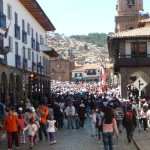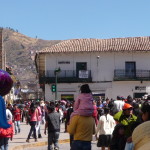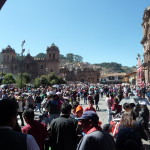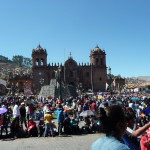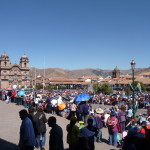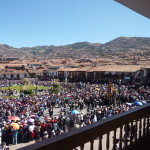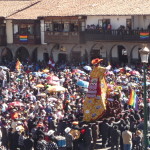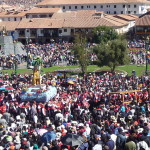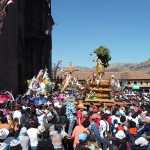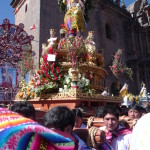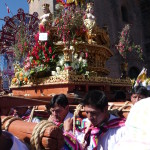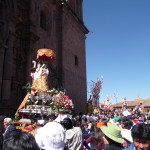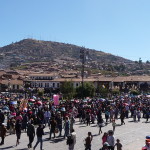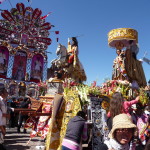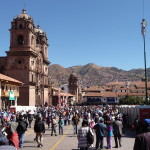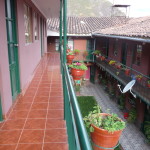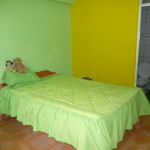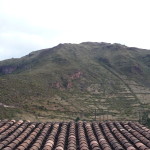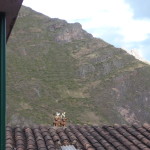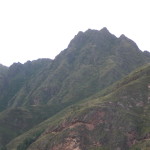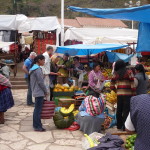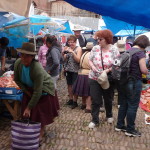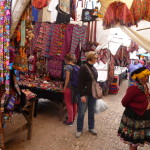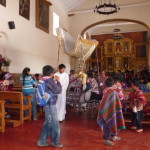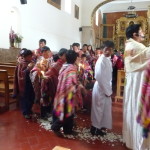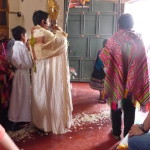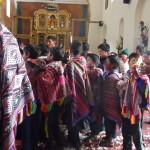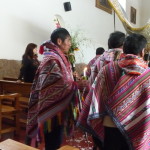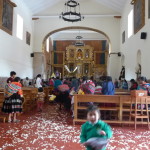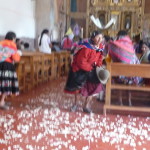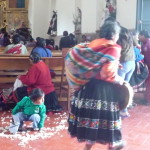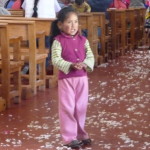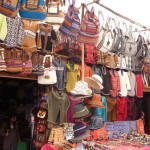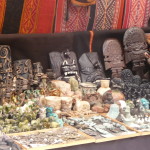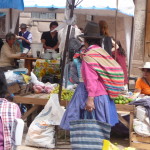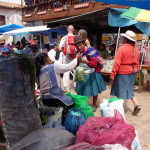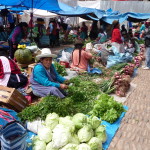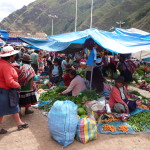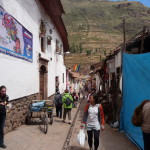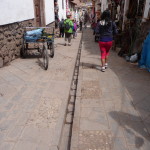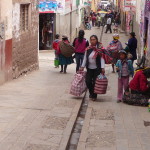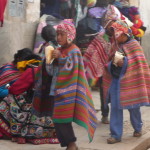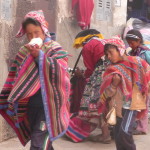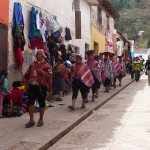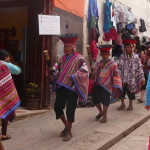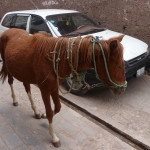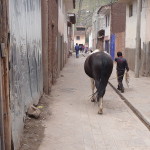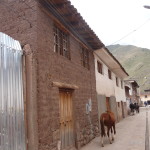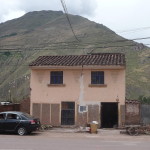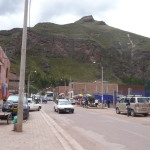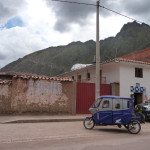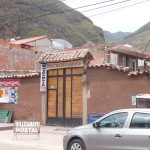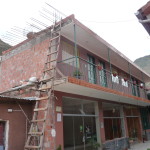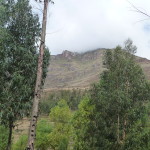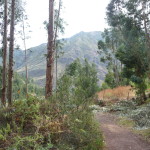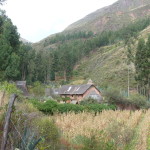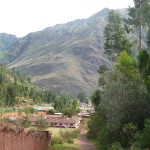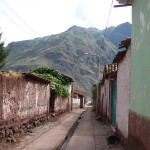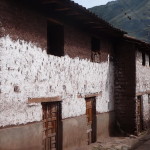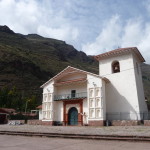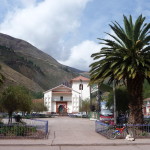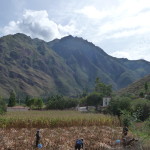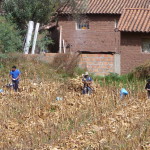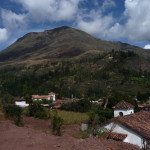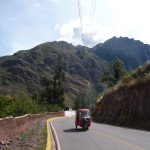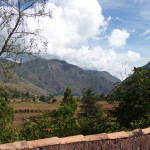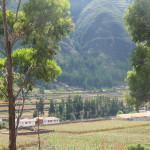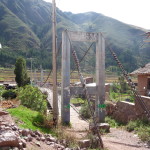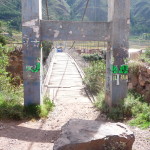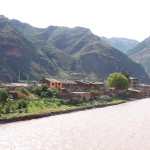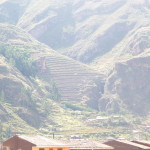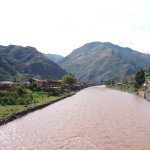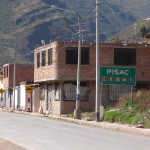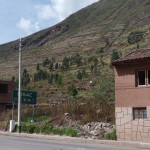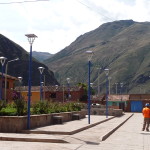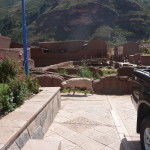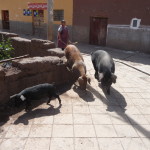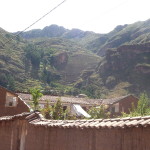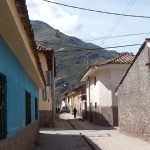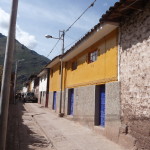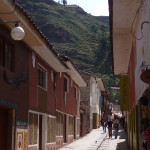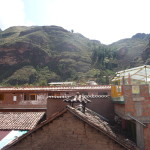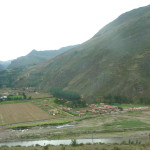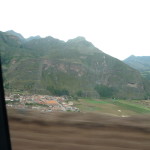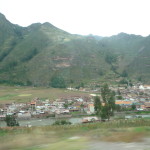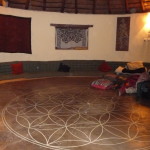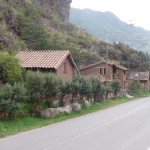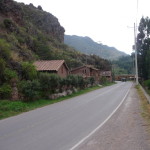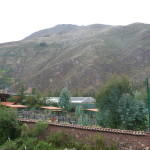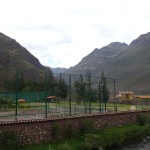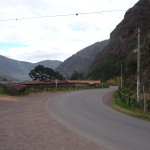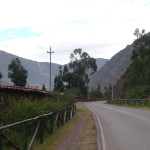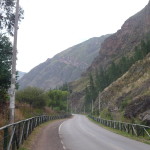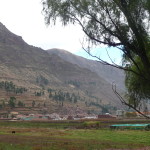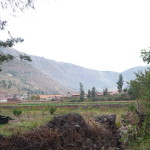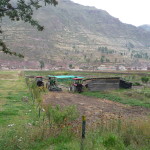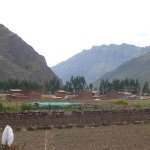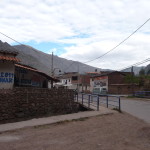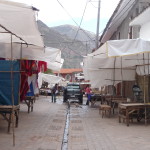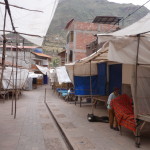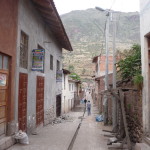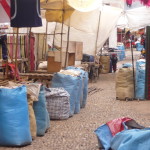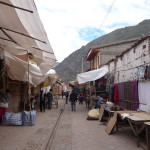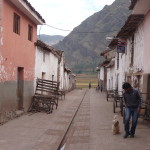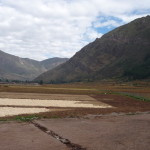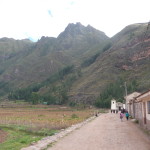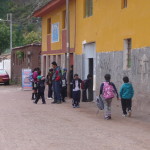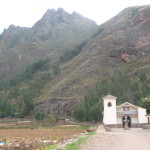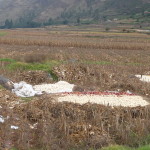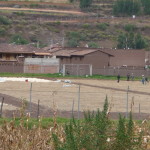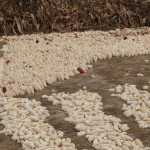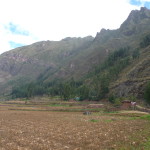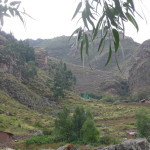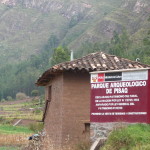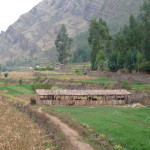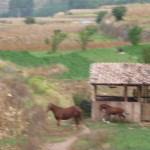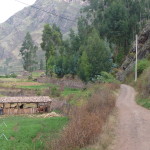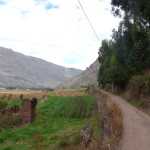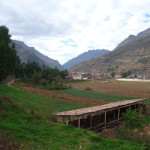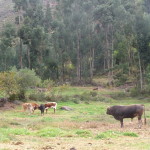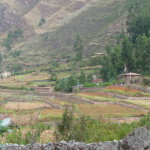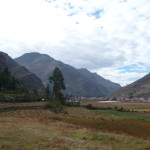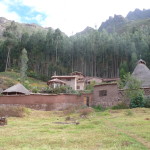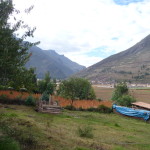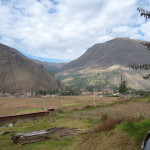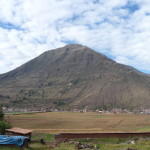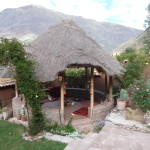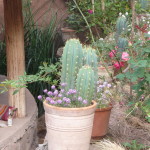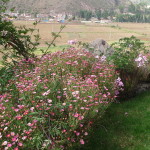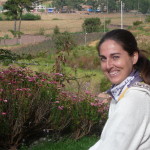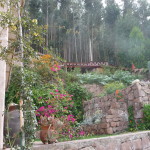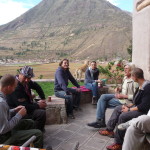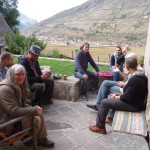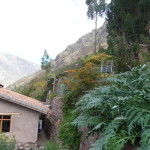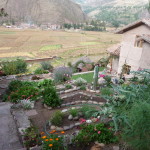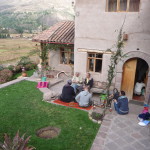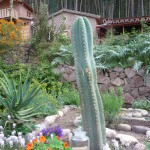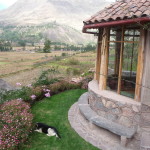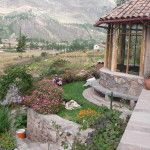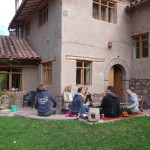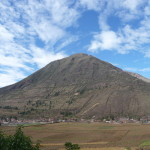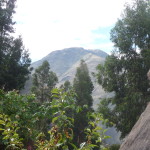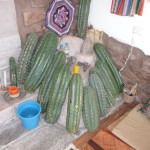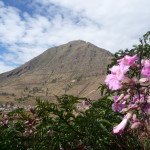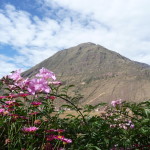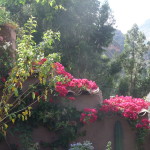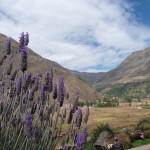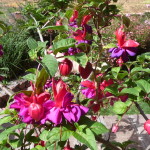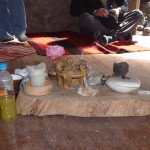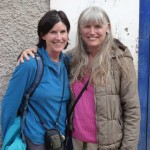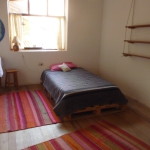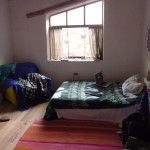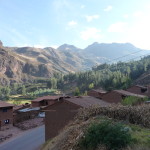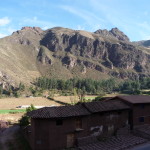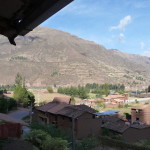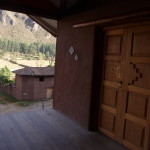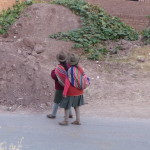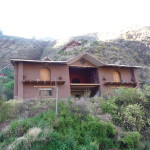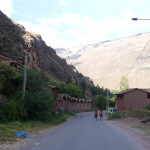This post primarily contains photos from my time in Pisac, but since I just finished posting a blog with photos from Cusco, I have decided to first post a few more photos from Cusco – photos that I just took last week while struggling to maneuver through large crowds at an Inti Raymi Parade.
So these first photos are slightly out of order. First there are fifteen photos from Cusco on June 19, 2014, and then there will be 144 photos from Pisac, encompassing the months of May and June, 2014.
On May 2, 2014, I boarded an old bus in Cusco – a collective public bus that cost me 2.5 Soles (about $1.00 US) – a bus with a destination of Pisac. There are three main ways to get from Cusco to Pisac. One is by public bus, one is by collectivo (16-passenger mini van) (about $1.50 to $2.00 US), and the final is by taxi. The first two are very inexpensive. I arrived in the Sacred Valley about an hour later. The Sacred Valley begins on the other side of the mountains (East) from Cusco, and runs from the small community of San Salvador all the way to Machu Picchu, gradually lowering in elevation the closer you get to Machu Picchu.
The town of Pisac, where I currently live, has just over 10,000 residents, and is about 9,751 feet above sea level (2972 meters). Since Cusco is at 11,152 feet in elevation, Pisac is about 1,400 feet (427 meters) lower than Cusco. Pisac is kind of a favored center for westerners and expats, with many spiritual and alternative healing activities being readily available (Kind of like San Marcos La Laguna, at Lake Atitlan in Guatemala.)
Pisac is nestled in a valley, surrounded by beautiful mountains on all sides. The sun rises above the mountains around 8:00 a.m. to 9:00 a.m. and disappears on the other side between 3:00 p.m. and 4:00 p.m., depending on where you live. During the day, it is nice and warm if you are in the sun. At night, it can get down to about 34-35 degrees Fahrenheit (2 degrees Centigrade) … and I have no heating system where I live.
This post contains 159 photos in total, including detailed narratives.
As usual, the photos in this post are thumbnail images. Please click on any photo to enlarge it. The thumbnails leave much to be desired as far as colors and resolution – plus the thumbnails clip all of the edges. I use thumbnails for the post itself, because it gives people an opportunity to get a summary glimpse without downloading huge amounts of data for the high-res photos.
CLICK ON ANY PHOTO TO ENLARGE TO HIGH RESOLUTION
Cusco Inti Raymi Festivities
Every year in Cusco, there is a huge festival that begins in early June and lasts until around June 24, with the main days being June 23 and June 24. It is called Inti Raymi or “Festival of the Sun”. Here in Peru, it is centered around the Winter Solstice, when the days are the shortest. I have been quite interested in attending this festival for several years, but when I learned that the festival is mostly a “pageant” – a huge show – I lost much of my fascination. According to Wikipedia, the last real Inti Raymi festival was in 1535. It was resurrected in 1944 as a pageant … but YES, the people participating are genuine, authentic, indigenous people.
While I would have loved to participate more, I have been quite busy with preparations for an upcoming move and decided to avoid the crowds. I had three opportunities to witness, first hand, several activities. The first two were when I was passing through Cusco on my way to and from Bolivia and Lake Titicaca in the first half of June.
Last week, on June 19, I went into Cusco for shopping errands, and stumbled upon another small parade in the Plaza De Armas. These first fifteen photos are from that parade.
I had been in Cusco investigating the possibility of buying a refrigerator and other household items (for a home I am moving to). As I walked from the “Mercado Central San Pedro” (a large indoor street market) to the Plaza De Armas, I was shocked by the huge crowds of people. It took me three times as long to maneuver through the groups of people mulling around here and there.
This photo is taken as I approach the Plaza De Armas. In the distance, you can see the huge crowd of people assembled in front of the cathedral.
This photo was taken from the same spot, looking behind me, back toward the market where I came from. If you click and expand the photo, you can see the congestion in the street that leads down the left side. The market is through the arch.
Just entering the Plaza De Armas. There are pockets of open space, but for the most part it is very difficult to get from here to there. It took me nearly fifteen minutes to walk around and through the crowd to get to the other side.
In the center of the plaza, a mock Inca Temple has been erected. A few weeks ago, I watched huge lines of people waiting their turn to get a photo on the steps of that temple. That is the cathedral in the background.
I am now standing on the steps of the cathedral, looking back at some of the crowd. A small parade is just beginning. It seems to originate from the cathedral itself.
Looking at the other end of the plaza from a nearby balcony. If you look closely, you can see one of the floats being carried down the street.
Closer inspection reveals that this is a huge religious sculpture/personage being carried on the shoulders of a huge group of men.
Another one, being carried on the backs of a large group of men in traditional clothing.
As I get closer to the front of the cathedral, I see that there are many more similar religious statues lined up, waiting to be carried in the parade. That is the cathedral on the left.
A close-up view of one that is just being carried from the front of the cathedral.
Just the large wooden beams alone (resting on their shoulders) look extremely heavy. I cannot imagine what this must weigh.
And another one, waiting to be carried into the parade.
More of the crowd, waiting for the parade. The front part looks “not crowded” because that is the street where the parade is moving.
As I started to leave, I walked by many more of these religious statues. They all have banners and signs in front of them, indicating which famous figure they represent.
One last look from the side of the cathedral, back down the street toward the San Pedro Market (about 10 minutes away on a normal day).
Pisac – In The Sacred Valley
I arrived in Pisac just before midday on May 2, 2014. Not knowing much about the town, I grab the first economical hospedaje (small hotel) that I can find. It is an older place called “Kinsa Cocha”. My room was very dark and cold, and the internet not so reliable. In the morning, when the power was off in the hotel, but not in nearby areas, I packed up my belongings and moved to another place that I found – a place that was cheaper and much nicer.
This is a photo taken on May 3, from just in front of my room at “Hosepdaje Wilcamayu”. I was in a second-floor room, on the end, with beautiful facilities, paying only about $13.00 US per night (35 soles).
This is my bedroom. Bobby and Brenda are enjoying the pillow view. It took me a while, but I eventually learned that the WIFI internet only worked in one spot, just to the left of the bed (not visible in this thumbnail image.) I later decide to leave this hotel because the WIFI router has serious problems, and the manager will not let me reset it when it freezes up – leaving me without internet for half-day increments.
This is one of the views from my balcony, looking across the roof on the other side of the hotel.
Another mountain view, with those cute little statues on the roof that bring blessings and good luck.
And another mountain view visible from just outside my doorway. The lighting is not very good in these photos, but the mountains can be quite beautiful here.
On May 4, 2014, I decided to explore the “Plaza De Armas” in Pisac. But rather than being a town square, it has become what is mostly a “tourist market”. The market in Pisac is a large tourist attraction. Tour buses and vans arrive here daily, throughout the morning and early afternoon, and the area is swarming with travelers from around the world (as well as some locals trying to purchase food).
You can see the mix of tourists and local people … and the tourists have their cameras ready. Today, I pretended to be a tourist, using my camera more freely than normal.
While the first two photos were of produce and fruits being sold, most of the Pisac market is selling textiles, clothing, and other souvenirs.
The indigenous woman in the bottom right is carrying a baby alpaca in her left arm. She is one of many who wander around, allowing people to take her photo for a small price.
As I walked through the market, I heard loud celebration coming from the nearby church (on the plaza). Since the door was open, I walked inside to observe.
They were just beginning a small parade. Others were taking photos, so I did the same.
The procession walked on flower petals as it made its way out into the plaza.
More of the procession.
A large group of young boys follows behind.
Just trying to capture everything I can …
When it was over, all the women and young girls scrambled to pick up as many of the flower petals as they could. It looked as if they were taking them home. This young girl in the front has filled her sweater with the petals.
This woman has filled the front part of her skirt with the petals.
More of the same.
A cute young girl.
Back out in the market. A small sampling of the goods available.
There is a huge variety from wood carvings, clothing, textiles, crystals, and many other things.
This woman in the fruit area is wearing a very traditional outfit. I love their hats.
More traditional outfits.
A group of local women selling their vegetables.
And more of the same.
A view down the main street in town. This runs from the East side of the market back down to the river, where there is a small highway that runs up and down the Sacred Valley. Most of the main shops are along this and a few other streets.
Tourist buses and vans actually drive up this street as they bring passengers to see the market. When they do so, you have to clear completely out of the way.
A closer view of the street. Most all of the little streets around here are just like this one, having a little runoff ditch in the center. The moto taxis and cars have to be careful when crossing over the ditch.
The same street, further down.
As I walked, the procession from the church passed by.
These boys were carrying and occasionally blowing on conch shells.
A much sharper image of the procession. I find the men’s hats to be quite interesting.
Closer view of the men with their hats.
A sampling of transportation options in town.
A young boy leads another horse down the street.
Both horses are visible in this image. This is not an everyday sight, but it is not uncommon.
A very typical building. you can see the white streak down the front where new electrical wires were put into the adobe walls and then patched over.
The famous Pisac Ruins are up on top of this mountain. I still have not been up there. The Hospedaje Wilcamayu (where I stayed for a week) is just down this street on the right.
Moto taxis are everywhere. (In Guatemala we called them Tuk Tuks.) Here, because of the cold, they are enclosed.
The outside of my Hospedaje. My room is on the balcony, just behind and to the right of the wooden doorway.
Another view of my room (top left). It is extremely common here for unfinished construction to be left like this, with rebar just hanging out – leaving the potential for future add-ons. And it is also quite normal that the adobe or block walls are left in their raw state.
The next pictures were taken on the next day, May 5, 2014. I was walking out to the community of Taray, which is about a 45 minute walk. I decided to check out a Shaman (Alonso Del Rio) that lives in the area. He lives up a little valley behind Taray. This is a mountain view along the path.
Another beautiful view along the path.
This is Alonso’s property. I did one ayahuasca ceremony here. It was COLD, but a very nice ceremony.
Looking back down the valley, toward the little community of Taray.
One of the main streets in Taray, as I begin to walk back to Pisac.
More typical adobe construction.
The church in Taray.
The same church, with the town square (Plaza de Armas) in front.
Local people working in their fields as I walk back toward Pisac.
They appear to be working with a very popular variety of corn that is all over Peru – I think they call it “chocle” in the markets. It has huge kernels that are quite tough. I am not a big fan from the few times I tried eating it at the Temple of the Way of Light near Iquitos.
Looking back at Taray from the road that leads to Pisac.
Along the road back to Pisac … which is up against the mountain in the distance.
It is not really visible in this photo, but Pisac is at the foot of that center mountain.
A zoomed-in look at a mountain on the west side of Pisac. I later do a couple of ceremonies right over there.
This is a little footbridge that crosses the river, leading to the highway on the other side. That highway is the one that runs up and down the Sacred Valley. The one where I am standing right now is a smaller one that runs between Pisac and Taray. There are huge rocks placed on either side of the bridge, preventing the little moto taxis from trying to cross. On my way back to Pisac, I decided to try a different route, and I crossed the river here.
The place where I later did ceremonies is almost directly across the valley from this bridge. From here, it is about a 20 minute walk to the center of Pisac.
Looking directly across the foot bridge. It won’t happen till early July, but I am buying a refrigerator from a woman who lives less than a hundred feet to the left of where I am standing when I take this photo.
Looking down at the large river that runs by Pisac. That terraced area on the side of the mountain (center of photo) is the lower part of the Pisac Ruins that are actually on top of the mountain.
This is a zoomed-in photo of that area. (Sorry for the poor lighting).
Looking from the footbridge directly down at the river. Pisac is off to the left, in the distance.
One of the signs as I enter Pisac from the other side of the river.
The road to/from Cusco zigzags up the hill in the background, climbing up and over the mountain, rising in elevation about 1400 feet.
A cute little plaza on the northwest end of Pisac.
Nearby pigs running free in the same area.
More pigs. The woman appears to be leading them somewhere
Another view looking up toward the mountain.
Walking along one of the streets in Pisac.
And another…
More typical views in this beautiful little town. This is looking up the street toward the market (two blocks away). It is hard to see, but I occasionally eat at a restaurant about a block and a half up, on the left – one called “Ulrike’s”. It is a popular hangout for gringos.
In fact, this photo is taken from the rooftop terrace on top of Ulrike’s restaurant.
These next few photos were taken on the next day (May 6, 2014) as I ride in a minivan on my way to Cusco. It is extremely difficult to get a clear, in focus photo from the moving van. I was trying to capture a few scenic photos of Pisac, taken from the road that winds up the mountain.
This image is of the eastern side of Pisac. The area in the upper-left center is called Rinconanda, where I began living on May 24. At the exact left center edge of this photo is another little house where I lived for 10 days as I tried to house sit and take care of two cats. I had to leave there because of allergies.
This is also taken from the van. The left center area of the photo is the eastern part of the main community of Pisac. The Hospedaje Wilcamayu where I lived for a couple of weeks is on the right side of that populated area. To the right of that is open fields. I usually walk along that mountain side at least once per day.
This final photo taken from the van is of the western side of Pisac.
On May 12, 2014, I did a ceremony at Diego Palma’s facility (I have done two ceremonies there). This is a photo of the inside of his ceremonial space – a large round room with a huge sacred geometry “Flower of Life” painted on the floor. The floor is theoretically heated, but it only helps a little. I was still very cold in these ceremonies.
On May 10, 2014, after living in Hospedaje Wilcamayu for a week, I moved into this first little house on the left. It belongs to a man who is an astrologer and an author. He was leaving for three and a half weeks on a book tour, and needed someone to rent his house and to take care of his two cats. It felt perfect (and I still believe it was) – but I quickly began to have strong allergic reactions to his kitties. After 10 days, I had to move out. I could hardly breathe. My sinuses swelled up so badly that it turned into a mucus adventure that lasted several weeks.
I loved the little house, but it was too small and too covered in cat dander. It had a tiny living room and open kitchen in the downstairs, and a tiny loft and bathroom upstairs.
Another view of the house (first on left). It was about a fifteen minute walk from town.
This sports complex was nearby, across a small river.
More of the sports complex, as seen from the house.
To get to town, I first walked around this sharp bend in the road…
… then down around this bending area …
… down this longer and straighter section.
A view along the way, looking to the left.
That is Pisac, in the distance.
One of the fields along the way.
And a group of homes that appear to be unfinished.
And finally, arriving to the populated part of town.
I frequently walk down this street. It is quite near to the previous photo. In the early morning and later afternoons, it looks a lot like this. During the daytime, when tourists are here, the booths are crowded with goods for sale.
The man on the right is beginning to set up his booth.
Another street in Pisac.
Every night the vendors pack up their wares and haul them away. Every morning they bring them back and set up again. These large bags are filled with beautiful merchandise.
More setting up the market.
In this photo, I have passed completely through the market, and am leaving town on the other side. Today is the beginning of another adventure.
I am walking out to Paul Temple’s house (in the far distance on the right, against the mountain). In the foreground is a huge field of drying corn.
The path takes me up the north/west side of town, past that old church that you can barely see at the end of this road.
This appears to be a small school. Lots of children are entering as I walk by.
A closer view of the old church. I walk on a small path to the left of it.
More corn drying in the fields.
Looking back behind me, a zoomed-in photo off men placing corn out to dry.
Some of the corn. These are huge ears with very tough (to me anyway) kernels.
I am following that path that runs above the field, and the bottom of the mountains.
Looking back up at the mountain above Pisac.
Apparently, this property is part of the Archeological Park of Pisac, but I see no ruins down here. The ruins are at the top of the mountains behind me.
A beautiful view with a barn full of horses in the foreground. I am headed to the far distance.
A closer look at a few horses. (Sorry for the bad focus).
Continuing down the path (about a 20 minute walk).
This area is gorgeous.
Looking back at the horse barn. Pisac is disappearing in the background.
Some bovines grazing in the fields. Apparently, both the males and females (cows and bulls) have horns.
Further down the path. I am headed to the house that is barely visible in the upper right center.
Looking across the valley, back toward Pisac.
Finally arriving at Paul Temple’s beautiful property. He is turning this into a retreat center with beautiful facilities and gardens.
Looking back toward Pisac from Paul’s property.
Looking to the right, toward Taray, again from Paul’s property.
Looking straight across the valley at a gorgeous mountain. If you click on the photo and enlarge it, you can see the little footbridge from earlier photos. It is near the right side of the photo, with a little blue color in front of it, and some trees to the right.
The ceremonial space (where ceremonies begin). I am here to do a ceremony with a new plant medicine – one called “San Pedro” in Spanish. But the locals in Peru call it Wachuma or Huachuma (both spellings seem common). It is a medicine made from a cactus, and is quite prominent in the shamanic traditions of the Andes.
These are young San Pedro cacti.
Some of Paul’s beautiful garden space.
My friend Rocio. I first met her in Guatemala, on Keith’s porch, at a cacao ceremony. She arrived in Pisac fairly recently.
More of the garden areas.
Some of those gathered for the ceremony.
Another similar photo, but this one includes ME (front left).
More views on Paul’s property.
From above, looking down at the property.
Another photo from above. Paul is the man with the tan jacket and silver hair. I see him as “Gandalf”.
Another San Pedro cactus. This one is more mature (in a size way).
Inside the beautiful windowed room to the right is a fireplace. It gets quite cold here when the sun goes down.
A similar view.
Visiting and waiting.
Another view of this majestic mountain.
More scenery.
A cluster of San Pedro cacti inside the window room.
Getting creative with beautiful foreground.
And more of the same.
The flowers here are incredible.
Taray in the distance.
Such variety and vibrant colors.
In the ceremony space, preparing to drink. Many of us met here yesterday to help make this medicine. We peeled off the waxy outer layer, harvested the more green parts of the cactus, and then Paul cooked it throughout the day …
It was a beautiful ceremony. I will write details in a future blog.
Ten days later, on May 24, this woman stopped me on the street. She was all excited. She told me she knew me from Keith’s porch in Guatemala. She is a friend of my friend Annetka from Canada. I first met Annetka in Valladolid, in the Yucatan, when I was recovering from a third degree burn on my foot.
This is Annetka’s friend (and now my friend) Carolina. I borrowed this photo from her Facebook page.
Longer Term Quarters
On May 21, 2014, my allergies got to be so bad that I have to move out of the little house where I was taking care of the cats. I moved back to Hospedaje Wilcamayu for two days. But their internet was so bad I soon moved to yet another hostel for one night. Finally, on May 24, I rented a more stable room in a local shared house with seven bedrooms, two bathrooms, and a shared kitchen. I paid for a month and moved in. Soon, on July 5, I will be moving again, to my own private rented house in a nearby town called Calca. But today, I am still living here in this house.
I started out in this room, and lived here until just a few days ago.
Now, I am in this room. The first room got no sun, and was always cold. It seemed that the adobe walls served to insulate the room in a reverse way, keeping the heat out and the cold in. My new room gets sun in the morning and in the afternoon. I love it much more.
I took these photos just this morning. This is the view looking out the window that sits by my bed, taken as the sun was starting to peek over the mountains.
This is the view looking out my balcony door. Note, there are no guardrails on the balcony.
If I step out onto my balcony, this is the view looking to the left.
Each room has its own private entrance. This is the door into my new room. I am standing in a common balcony/patio area. Currently, there is no furniture here, because a worker has been painting for a few days. That should be done today.
These are two women walking on the street below me as I am taking photos.
I walked down to the street below and took this photo of the house where I am living. My present room is the upper one on the left. My former room was in the back, on the right, never getting any direct sun. The sun rises on the left and sets behind me (from where I am standing).
This is the street below the house, as it heads back to Pisac. The little house where I lived in early May is on the way back to Pisac, less than ten minutes away. My walk from here to Pisac is about 20 minutes.
Photo Wrap Up
This ends my photo post for today. It is now time to write about my ceremonial experiences here in Pisac. Soon, I will continue with more than a thousand other photos from trips to Machu Picchu and Lake Titicaca (both Bolivian and Peruvian sides).
But those blogs will be on another day.
Copyright © 2014 by Brenda Larsen, All Rights Reserved
